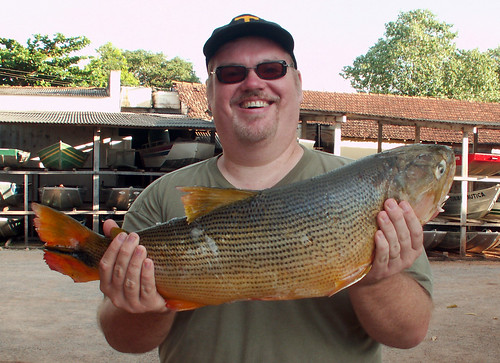
As I reported a couple of weeks ago, I snagged a pretty good size dorado and was reeling him in when all of the sudden my brand new graphite rod snapped in two. Thankfully Rogerio had brought an extra rod with him.
The situation helped me realize that no normal rod is made to handle the type of fishing we do on the Pantanal so my search began for just the right rod.
After some pretty extensive research, I kept hearing a name that I wasn't familiar with, ESOX rods. The reason I wasn't familiar with it is that they have not started shipping rods to Brazil. Until now.

I sent an email to their company and was surprised to hear back from Brent Moorehead, president of ESOX that same afternoon. After just a few minutes of hearing his passion about the perfect rod, I knew this was the company we were looking for.
We are proud to announce that Rio de Vida Fishing Tours will use ESOX Hand-Made rods exclusively for our fishing excursions.
These are no dime store fishing rods. According to Brent, most of the rods they sell are to professional tournament anglers.
Our goal at Rio de Vida Fishing Tours is to provide the best quality equipment for our clients and with ESOX, we are definitely assured of that.
Go over to their website to see their great selection of rods, hand-made in the USA.
Thanks Brent and ESOX for your willingness to partner with us.

















